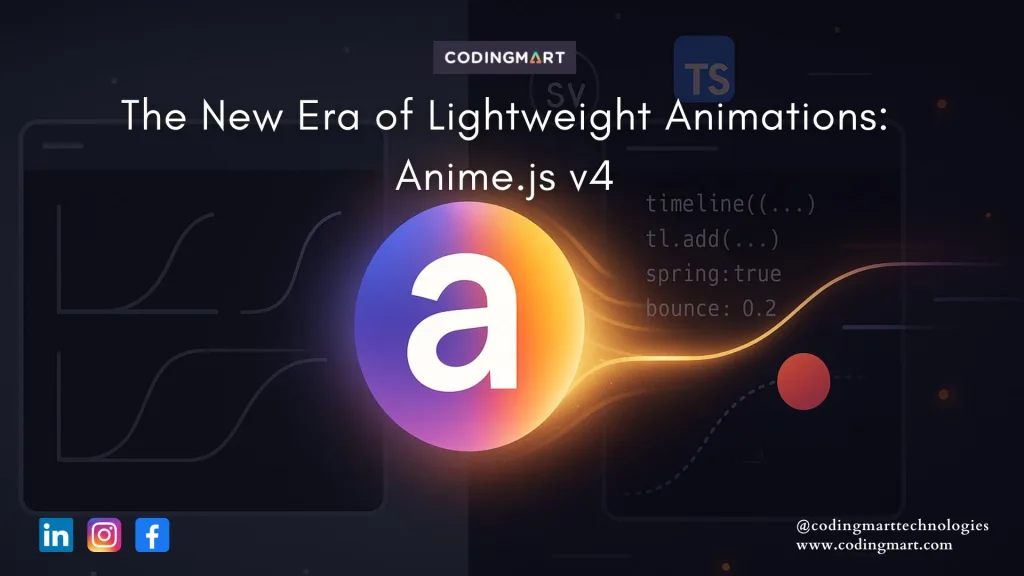For almost a decade, Anime.js has been a go-to tool for developers looking to create lightweight, beautiful animations on the web without the overhead of large frameworks.
Now, with the release of Anime.js v4, the library has been reimagined to meet the demands of modern development from better performance to improved developer experience.
Here’s an in-depth look at what the new version brings to the table.
Modernizing for 2025
Anime.js v4 isn’t just an update; it’s a thoughtful evolution.
The core philosophy remains the same minimal, flexible, powerful but the features now align better with today’s expectations for type safety, performance, and scalability.
The biggest highlights:
- Native TypeScript support ensures stronger developer tooling and reduces runtime errors.
- Refined modular timelines make sequencing complex animations easier and more readable.
- Physics-based easing introduces more natural, life-like motion without requiring custom functions.
- Performance improvements lead to a smaller, faster library ideal for mobile-first experiences.
- Simplified SVG path animations reduce friction when working with scalable vector graphics.
Why TypeScript Support Matters
One of the most common criticisms of Anime.js in the past was its lack of official TypeScript support.
In v4, this has been addressed thoughtfully, with built-in TypeScript definitions that enhance autocompletion, static analysis, and error prevention.
For large teams or scalable applications, this improvement means reduced bugs and faster development cycles.It also positions Anime.js better against modern animation libraries like GSAP, which have had TypeScript support for years.
Smarter Timelines for Complex Animations
In previous versions, managing complex chained animations could become messy quickly. Version 4 introduces a more modular approach to timelines, allowing developers to build sophisticated sequences without worrying about callback hell or overly verbose configurations.
The new timeline system is intuitive and composable, making it easier to maintain and extend animations as projects grow.
More Natural Motion with Physics-Based Easing
One of the standout features of Anime.js v4 is the introduction of physics-based easing such as spring and bounce effects.Rather than relying on standard cubic-bezier curves, developers can now simulate realistic movements effortlessly, giving interfaces a more dynamic, natural feel.
This trend reflects a broader industry shift towards micro-interactions that feel less mechanical and more human.
Prioritizing Performance
In a web ecosystem increasingly concerned with loading times, bundle sizes, and device responsiveness, Anime.js v4 makes significant gains.The core library has been streamlined, resulting in faster initialization and reduced impact on page performance.
This makes Anime.js a highly attractive choice for projects that need to balance stunning visuals with lightweight execution especially important for mobile web apps and progressive web applications (PWAs).
Simplifying SVG Path Animations
Animating elements along SVG paths was already possible in Anime.js, but version 4 simplifies this experience even further.The learning curve is now gentler, and common frustrations have been addressed, allowing developers to focus more on creativity and less on workarounds.
Given how crucial SVGs are for modern, scalable interfaces, this is a major plus.
Final Thoughts
Anime.js v4 isn’t just about catching up with current trends; it’s about setting a standard for what a lightweight, developer-friendly animation library should look like in 2025.
For teams that need to create smooth, scalable, and maintainable animations without overloading their tech stack, Anime.js remains a compelling choice. Version 4 is a clear sign that even the smallest libraries can adapt, evolve, and stay relevant in an increasingly complex development landscape.
If you haven’t revisited Anime.js in a while, now is the time.
